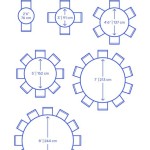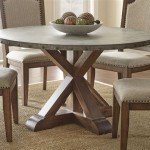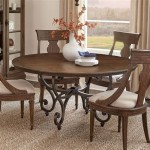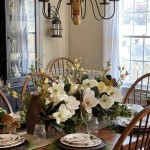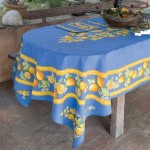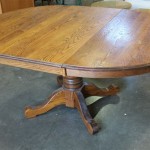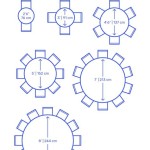Quilted Table Runner Patterns Using Charm Packs
Charm packs, those delightful bundles of pre-cut 5-inch squares of fabric, are a quilter's dream. They offer a coordinated collection of prints and colors, eliminating the time-consuming task of selecting and cutting individual fabric pieces. This makes them especially well-suited for quick and satisfying projects, such as quilted table runners. A quilted table runner can add a touch of handmade charm to any dining table, coffee table, or sideboard. It's a versatile project that can be adapted to suit various decorating styles and seasonal themes. This article explores the various quilted table runner patterns that can be efficiently created using charm packs, outlining different design approaches and techniques.
Efficiency and Charm Pack Advantages
The inherent appeal of using charm packs for table runners lies in their efficiency. Instead of spending hours cutting squares from yardage, the quilter can immediately begin arranging and sewing. The pre-selected fabrics within a charm pack ensure a harmonious color palette, eliminating the worry of mismatched prints. This pre-coordination is particularly beneficial for quilters who are new to color selection or those who prefer a more streamlined quilting experience. Furthermore, charm packs often provide a cost-effective way to sample a variety of fabrics from a particular collection before committing to purchasing larger cuts. This allows quilters to experiment with different prints and textures without a significant financial investment.
Beyond the time-saving aspect, charm packs promote creativity within defined boundaries. The uniform size of the squares encourages experimentation with different layouts and block designs. Quilters can explore various grid arrangements, piecing techniques, and embellishments to create unique and personalized table runners. The limited number of fabrics within a charm pack can also inspire quilters to think outside the box and find innovative ways to combine and contrast the available prints. In essence, charm packs offer a framework for creativity, encouraging quilters to explore their design sensibilities within a manageable and accessible format.
When planning a table runner using charm packs, consider the overall dimensions desired. A standard table runner length is typically between 36 and 72 inches, while the width often ranges from 12 to 18 inches. These dimensions can be adjusted to suit the specific table or display surface. The number of charm squares needed will depend on the chosen pattern and the desired size of the finished table runner. It's always advisable to purchase an extra charm pack or supplement with additional fabric to account for potential errors or design changes. This proactive approach ensures that the quilting project can be completed without running out of essential materials.
Exploring Different Table Runner Patterns
The possibilities for designing quilted table runners with charm packs are virtually endless. The simplest approach involves sewing the squares together in a grid pattern. This method is ideal for showcasing the individual prints within the charm pack and creating a visually appealing patchwork effect. The squares can be arranged in a random order or carefully curated to create a specific color gradient or pattern. To add visual interest, consider incorporating sashing strips between the squares. Sashing strips are narrow pieces of fabric that separate the squares, providing definition and enhancing the overall design. Different colors of sashing can change the feeling of the runner.
Another popular design involves creating simple blocks from the charm squares. One example is a four-patch block, which is made by sewing four charm squares together. These four-patch blocks can then be arranged in various configurations to create different patterns. Another option is to cut each charm square into four equal triangles and sew them together to create half-square triangles. These half-square triangles can then be combined to form blocks with various geometric designs. The use of half-square triangles opens up a wide range of possibilities, including stars, pinwheels, and other intricate patterns.
For a more modern aesthetic, consider incorporating negative space into the table runner design. This can be achieved by strategically placing solid-colored fabric squares between the charm squares to create a sense of openness and visual contrast. Negative space can also be used to highlight specific areas of the table runner or to create a focal point. The use of negative space adds a contemporary touch to a traditional quilting technique, resulting in a visually striking and modern table runner. The colors used for the negative space areas can be chosen to either compliment or contrast with the charm pack fabrics, allowing for further customization and personalization of the final design.
Border designs can further enhance the appearance of a charm pack table runner. A simple border can be created by adding a strip of fabric around the perimeter of the pieced center. More elaborate borders can be assembled using additional charm squares or coordinating fabrics. The border can be pieced, appliqued, or even embellished with decorative stitching. A well-chosen border can frame the table runner and add a finishing touch, tying the entire design together and creating a polished and professional look. The width and complexity of the border should be carefully considered to complement the overall design and scale of the table runner.
Techniques and Finishing Touches
Proper piecing techniques are essential for creating a durable and aesthetically pleasing quilted table runner. A consistent seam allowance is crucial for ensuring that the blocks and squares fit together correctly. A quarter-inch seam allowance is the standard for quilting, and employing a quarter-inch foot on the sewing machine will improve precision. Pressing seams accurately is also important. Pressing the seams open can reduce bulk, while pressing them to one side can create a flatter surface. The choice of pressing technique depends on the specific fabric and the desired effect. It's also recommended to use a high-quality thread that complements the fabrics being used. A neutral-colored thread is often a safe choice, but a coordinating thread can add a subtle touch of color and visual interest.
Once the pieced top is complete, it's time to layer the backing, batting, and top. The backing fabric should be slightly larger than the top to allow for ease of movement during quilting. The batting provides insulation and loft to the table runner. The type of batting chosen will depend on the desired thickness and drape. Cotton batting is a popular choice for its natural fibers and durability, while polyester batting is a more affordable option that provides good loft. The three layers are then secured together using pins or basting stitches. Ensuring each layer lay flat and free of wrinkles prevent puckering during the quilting process.
The quilting process can be customized to complement the overall design of the table runner. Simple straight-line quilting can be used to create a clean and modern look. More elaborate free-motion quilting can add texture and visual interest. Quilting in the ditch, which involves stitching along the seams, can help to secure the layers and define the pieced design. The choice of quilting design should be carefully considered to enhance the overall aesthetic of the table runner and create a cohesive and visually appealing finished product. Machine quilting is the most common method, but hand quilting can add a unique and personal touch.
After the quilting is complete, the excess backing and batting are trimmed. The edges of the table runner are then bound using a binding fabric. The binding not only protects the raw edges of the fabric but also adds a decorative finish to the table runner. The binding can be made from the same fabric as the backing or from a contrasting fabric to create a visual accent. There are various methods for attaching the binding, including machine stitching and hand stitching. A well-applied binding is essential for creating a durable and professional-looking finish. Paying attention to detail during the binding process will ensure that the table runner stands the test of time and remains a cherished heirloom for years to come. Finally, press the finished table runner to remove any wrinkles and ensure that it lays flat. The quilted table runner is now ready to adorn the dining table or any other surface where a touch of handmade charm is desired.

Charm Pack Table Runner Topper A Quilting Life

Table Runner Pattern For Charm Packs Quilt Patterns Easy Scrappy Quilting

Charm Pack Table Runner Topper A Quilting Life

Contemporary Table Runner Pattern The Stitching Scientist
Serenity Path Table Runner Snowy Days Quilting

Simple Stars Quilted Table Runner

Mini Charm Mix Table Runner Free Pattern Freemotion By The River

Contemporary Table Runner Pattern The Stitching Scientist

Mini Charm Pack Skinny Table Runner The Little Mushroom Cap A Quilting Blog

Fall Charm Quilted Table Runner Joyous Home
Related Posts

